How to Distinguish from Similar Species: Euclymene sp has distinct notches in the rim of its cephalic plate, but it may merely be a variation of E. zonalis. Many members of the family have no setae on the last several segments, or have prominent collars around some of the segments.
Note: Thanks to Leslie Harris, a Polychaete specialist , I have learned that Eyclymene zonalis is probably not the species on our Pacific coast. The actual species name is uncertain.
Geographical Range: OBIS records include specimens from the Pacific Northwest and British Columbia coasts and from the New England states and Nova Scotia
Depth Range:
Habitat: This family is often found in tubes on sandy/muddy beaches, often projecting from the sand. This individual was subtidal on soft bottom.
Biology/Natural History:
| Return to: | |||
| Main Page | Alphabetic Index | Systematic Index | Glossary |
References:
Dichotomous Keys:Kozloff 1987, 1996
General References:
Scientific
Articles:
Type the article
information within this span
Web sites:
General Notes and Observations: Locations, abundances, unusual behaviors:
Various photomicroscopic views of Euclymene zonalis' head
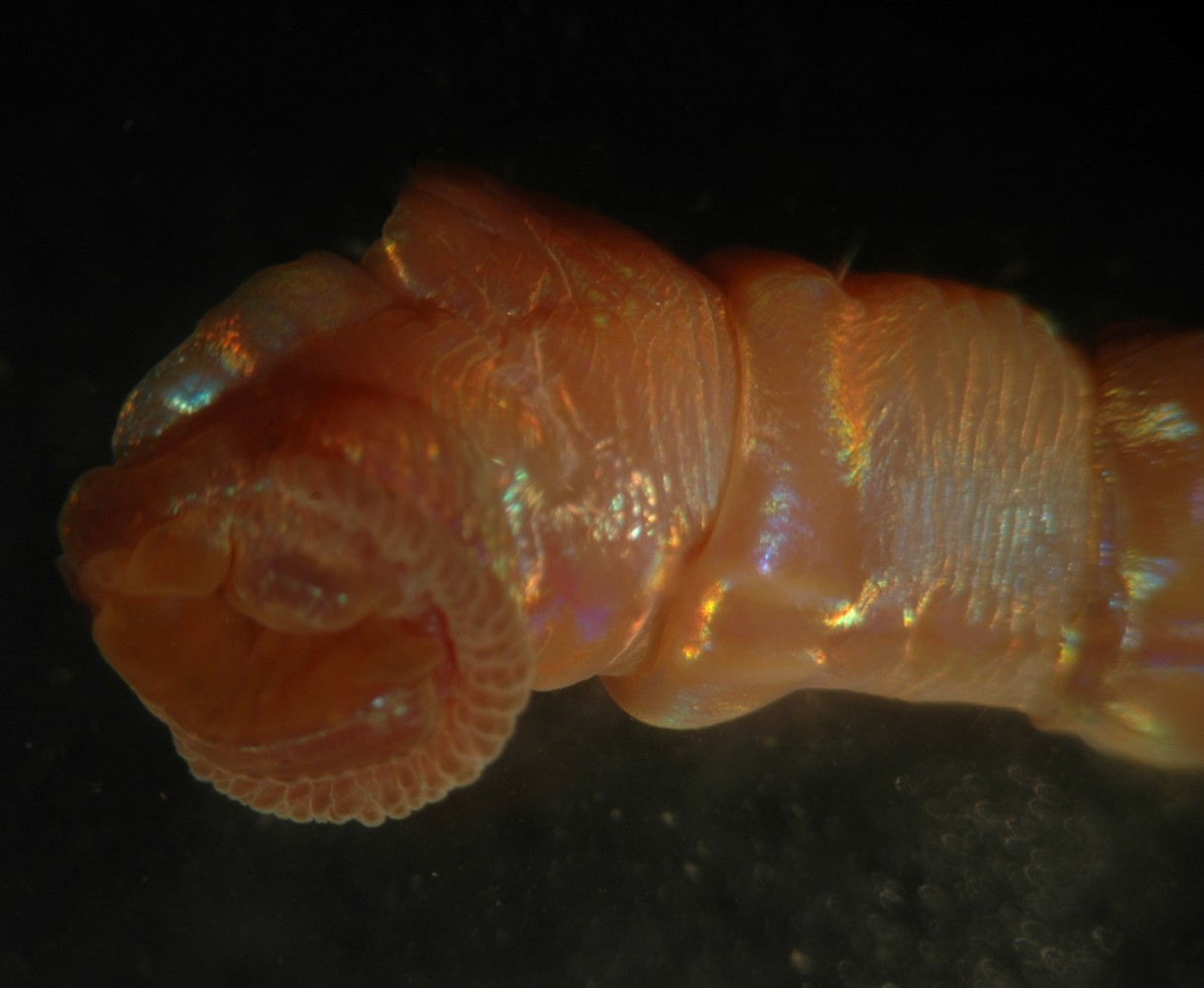 |
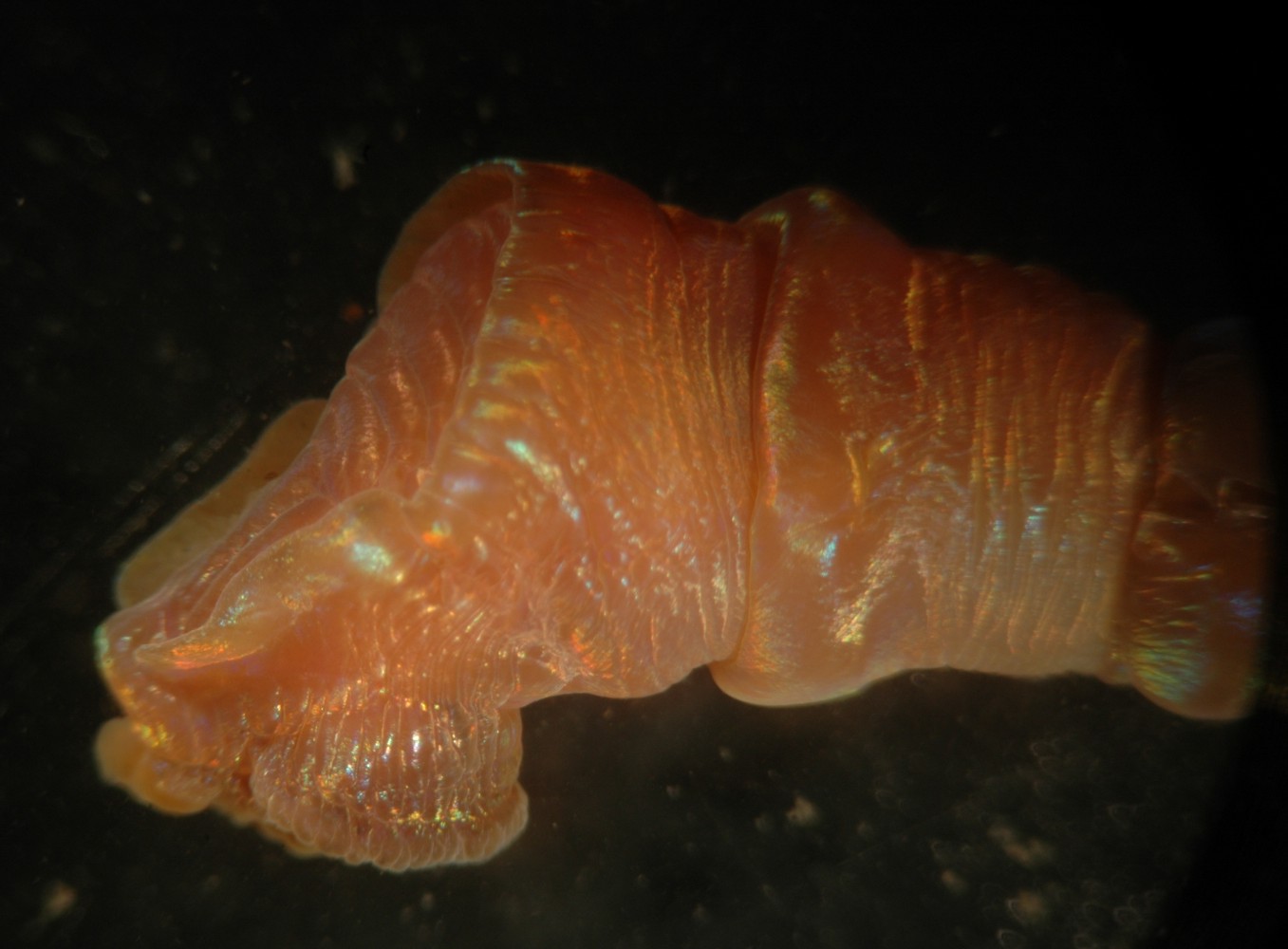 |
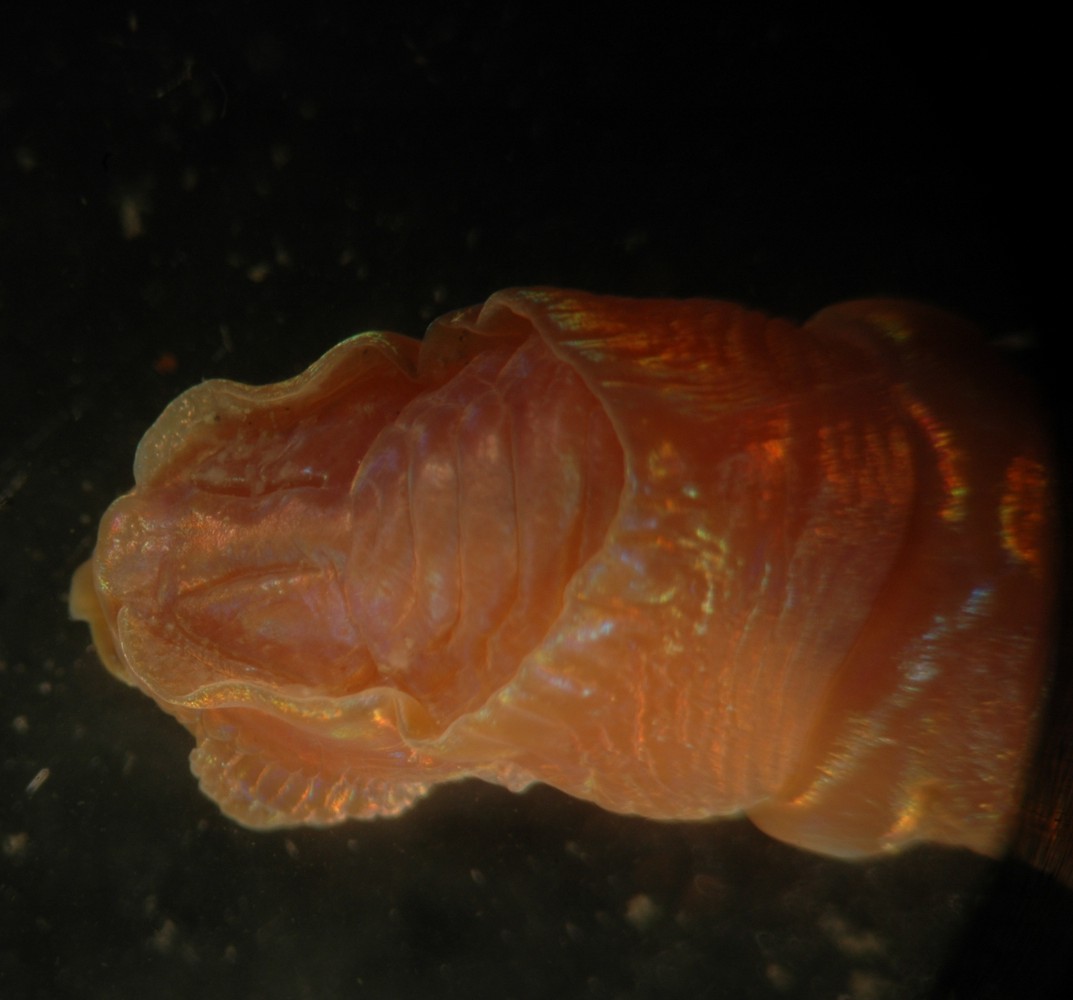 |
| In this nearly ventral view the mouth can be clearly seen. Note that setiger 1 is clearly distinct from the prostomium/peristomium and from setiger 2, and that its notosetae are capillary setae. | This lateral view clearly shows the cephalic shield dorsal to the mouth. The shield has a raised, leathery rim which does not have large, distinct lateral slits in it. | This dorsal view of the head shows the cephalic shield. |
Views through the dissecting microscope of the setae on the first few segments:
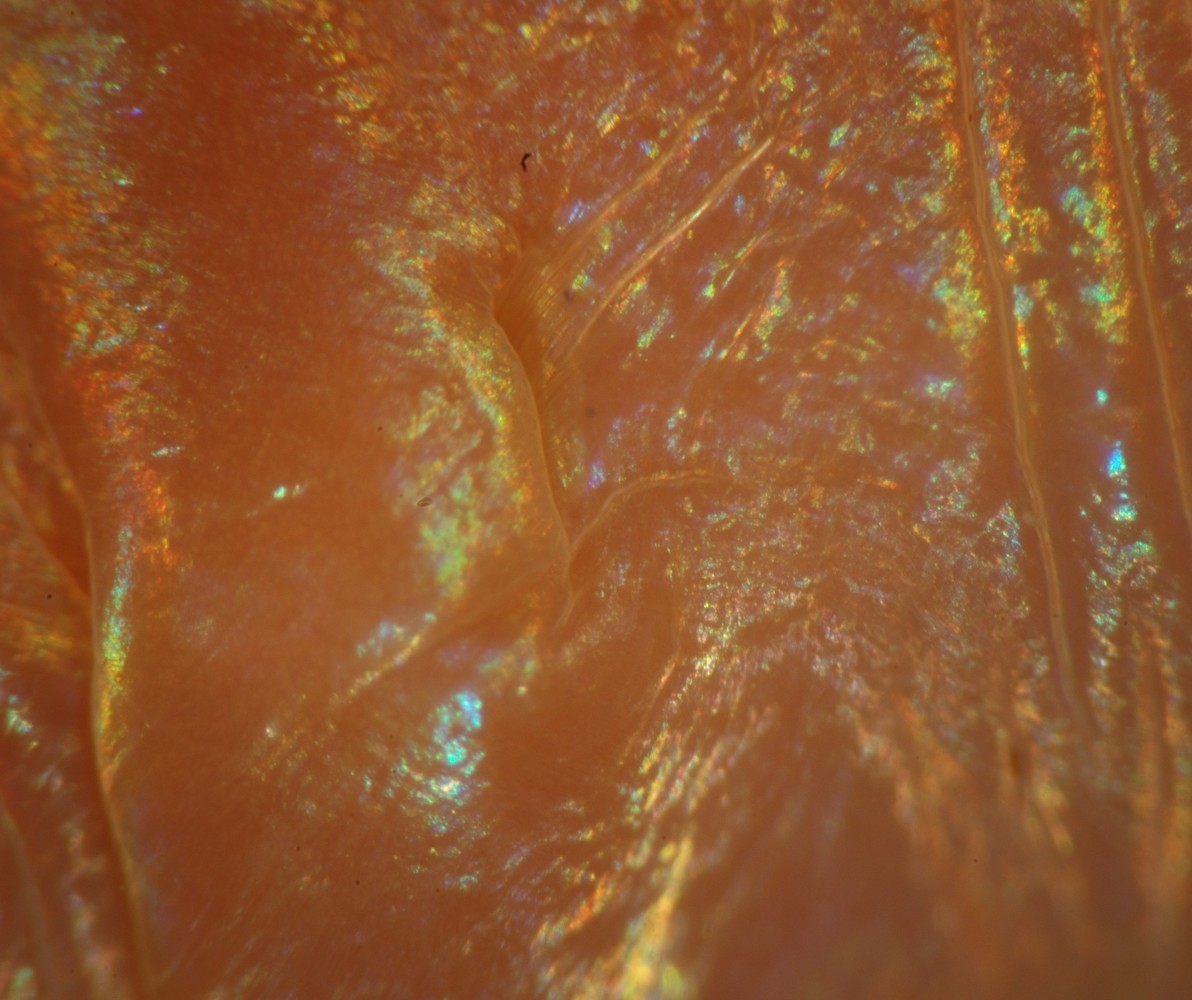 |
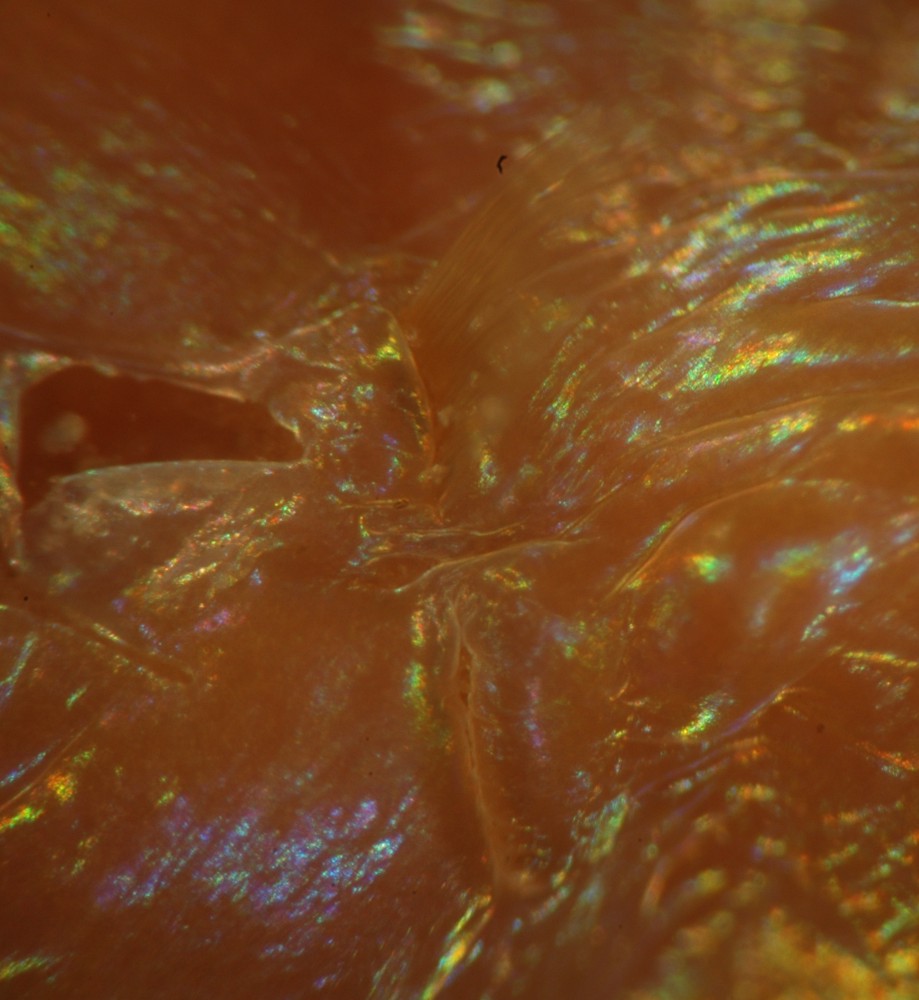 |
| This is a view of the setae on setiger 1. Dorsal is upward and anterior is to the left. There is a tuft of several capillary notosetae but few if any neurosetae. | This is a view of the setae on setiger 2, in the same orientation. There is a tuft of capillary notosetae (top). There are a few small uncini for neurosetae (in bottom slit). |
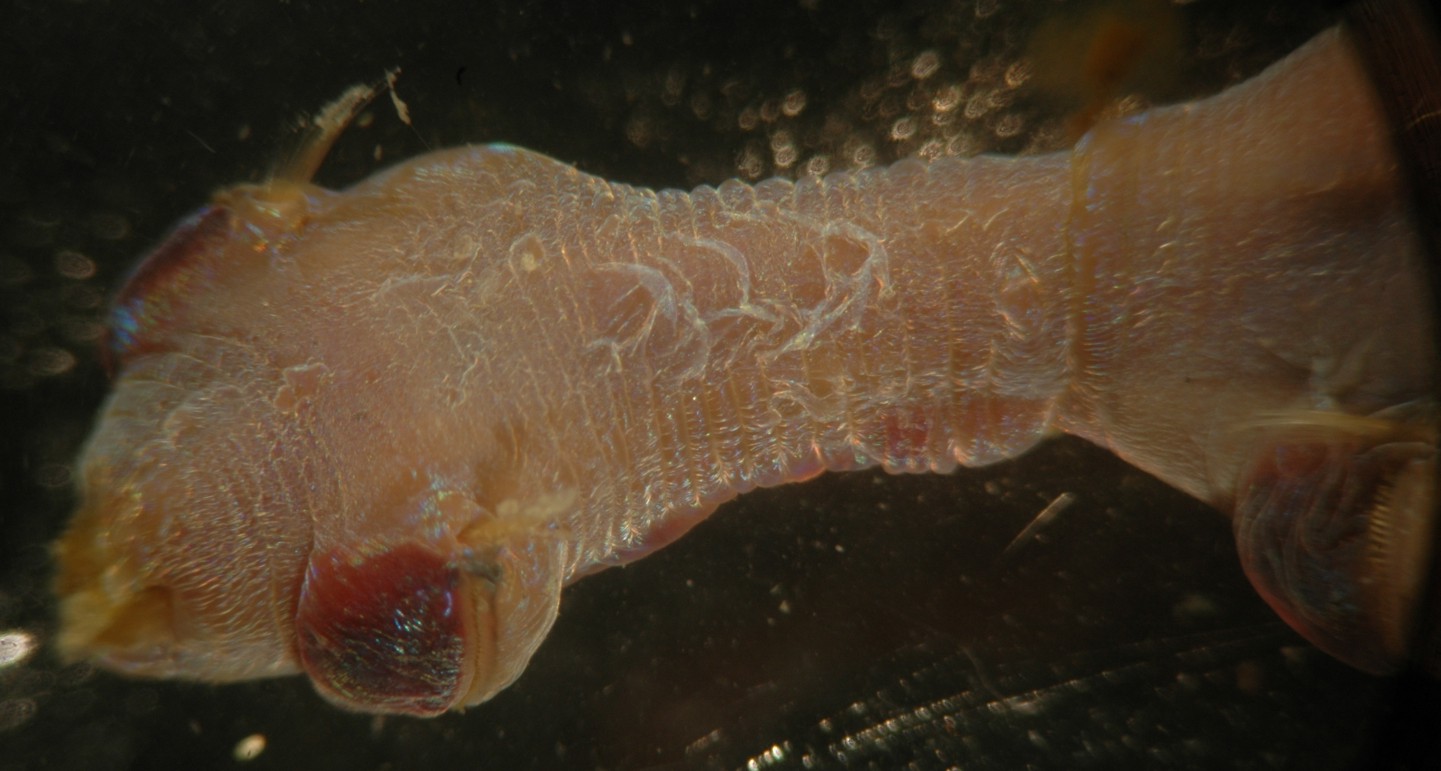
The anus is on a conelike
projection from the pygidium.
The last several segments have setae.
In this photomicrograph, the notosetae
of the last segment are capillary
and the neurosetae
are uncini.
Authors and Editors of Page:
Dave Cowles (2007): Created original page
Jonathan Cowles (2007): Updated page with CSS
